I have gotten a few questions about my diet on the trail, so here is a rundown of what I eat on the trail and while in town. This diet is still a work in progress as you will see.
Here is what I eat on a typical day on the trail.
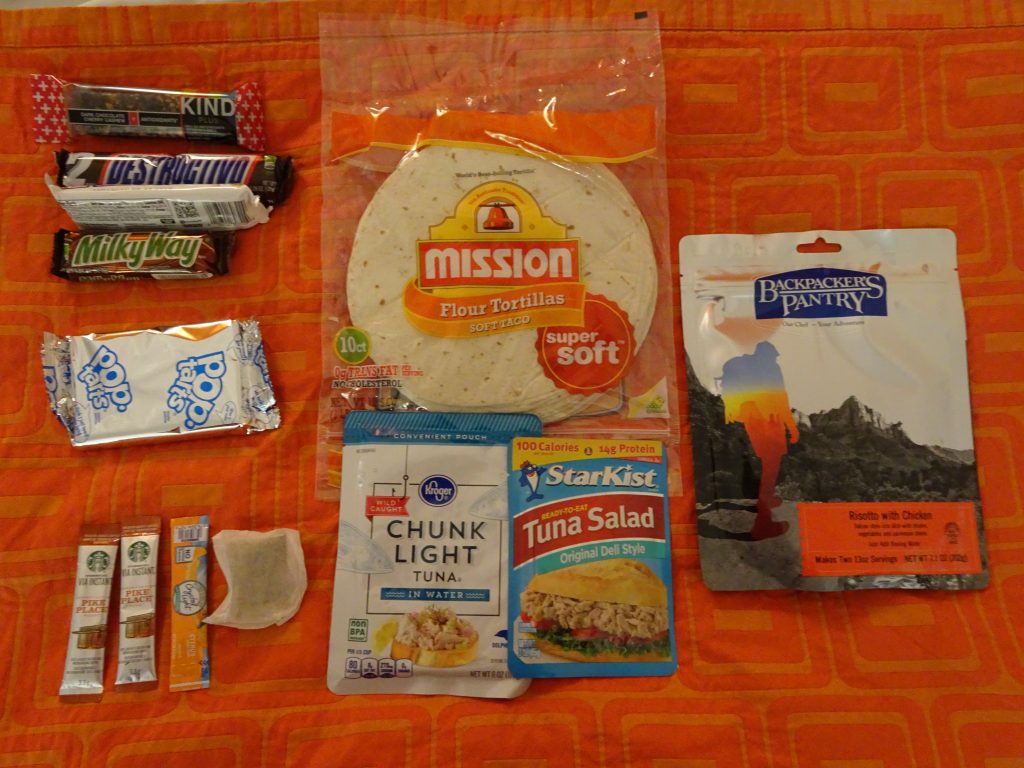
Food for the Day
I start the day with a cup of Starbucks Via instant coffee and a couple pop tarts. During my morning hike, I will eat a couple of candy or energy bars. Around 1:00 PM, I take a lunch break. For lunch, I have two “tuna tortillas” which consist of the contents of a tuna pouch double-wrapped in flour tortillas, plus a cup of coffee. During my afternoon hike, I eat a couple more candy/energy bars. For my evening meal, I will have a freeze-dried backpacker meal along with a cup of caffeine-free herbal tea. Also, through the day, I will usually graze on some salty snack like Chex Mix.
I find backpacker meals to be tasty and nutritious, containing both meat and vegetables. Unfortunately, these are not available in some trail towns, where the only shopping option might be the local Dollar General. In these cases, I buy Knorr Sides (Pasta Sides, Rice Sides, Asian Sides, etc.) to which I add a tuna pouch or canned chicken to get some protein. I find the Knorr Sides to be neither tasty nor nutritious, but they do pack some calories. They are also very cheap, ($2 versus $8 for a freeze-dried meal), which makes them popular with more thrift-conscious hikers.
I tallied up my daily intake on the trail and it comes to about 3100 calories.
- 2 pop tarts (420 calories)
- 1 energy bar (170 calories)
- 3 candy bars (720 calories)
- 4 tortillas (560 calories)
- 2 tuna packs (260 calories)
- 1 backpacker meal (740 calories)
- 1/4 bag Chex Mix (260 calories)
- 2 instant coffees (0 calories)
- 1 herbal tea (0 calories)
- 1 Crystal Light (10 calories)
- 1 daily multivitamin
If this sounds like mostly junk food, you are right. On the trail, calorie density is king. It isn’t practical to carry fruits and vegetables. I read an article by some PhD nutritionist who maintained that the junk food is not harmful. She said that when operating at a large calorie deficit, your body burns the bad stuff instead of storing it. I hope she is right.
I have a fairy ultralight cooking setup which consists of a miniature propane stove, propane canister, 0.75 liter titanium pot, Bic lighter, collapsible cup, and spork. The canister, stove, and lighter pack up inside the pot.
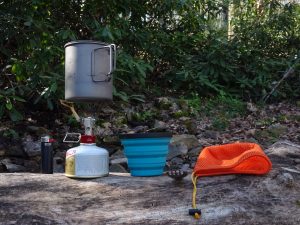
Cook Set – Deployed
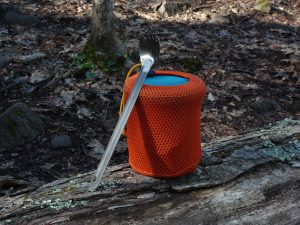
Cook Set – Packed Up
I never cook anything in my pot. I only boil water to pour into my dehydrated meal pouches or into my coffee cup.
While in town, I try to eat as much as possible. I don’t have the “hiker hunger” such that I can snarf down a large pizza or half gallon of ice cream in one sitting. I think that my stomach has shrunk somewhat from eating frequent but smaller meals and snacks on the trail. To adapt, while in town, I try to have restaurant meals, breakfast-lunch-dinner, and then “snack” in between meals. After dinner, I might have a pint of ice cream. Sometimes I buy a box of Frosted Mini-wheats and a half gallon of whole milk, and see how many bowls I can eat between breakfast and lunch.
Since the beginning of my hike, my weight has dropped from 177 to 154, so I am definitely operating at a calorie deficit. While I feel I am still at a healthy weight, I need to slow the weight loss. My strategy will be to carry more calories, and eat more in town. Carrying more calories means packing more food or more calorie-dense food. For example, many hikers carry plastic bottles of olive oil and add some to whatever they are eating. (Olive oil is very calorie-dense at 250 cal/oz as compared to 130 cal/oz for most candy bars.) To eat more in town, I may need to take more “zero days”. I have taken only two zeros since I started on the trail, whereas the typical thru-hiker might take about one per week.
Along the Appalachian Trail, I occasionally run across historical tidbits. There is evidence, usually made of stone, that people once lived and worked in the mountains.
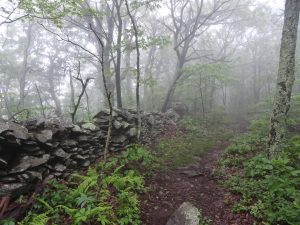
Stone Fences on Humpback Mountain
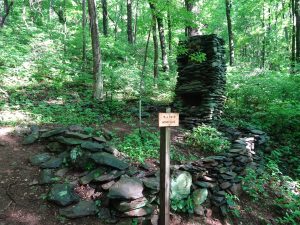
W. J. Mayo Homeplace
The other day, I ran across this peculiar marker.
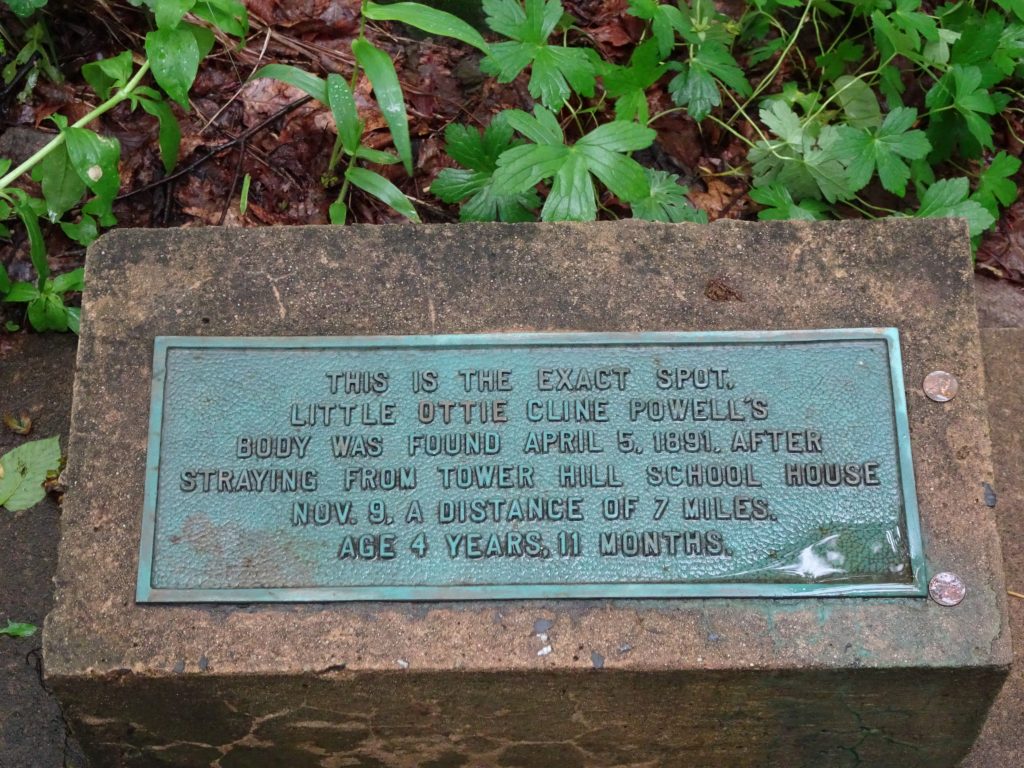
Marker on Bluff Mountain
It is pretty surprising that a 5-year would walk 7 miles. What is more remarkable is that this plaque is only about 20 feet the survey marker at the mountain top. For some reason, the child chose to climb to the top of the mountain.
I have passed four or five abandoned cemeteries during my hike. While these are generally within a mile or so from the trail head, the Lowe Family Cemetery was unusual in that it was up on the mountain, four miles from town. This was the most primitive cemetery I have ever seen. There were about twenty headstones, consisting of jagged pieces of fieldstone. Only one stone had any inscription. These cemeteries always serve to remind me of our mortality.
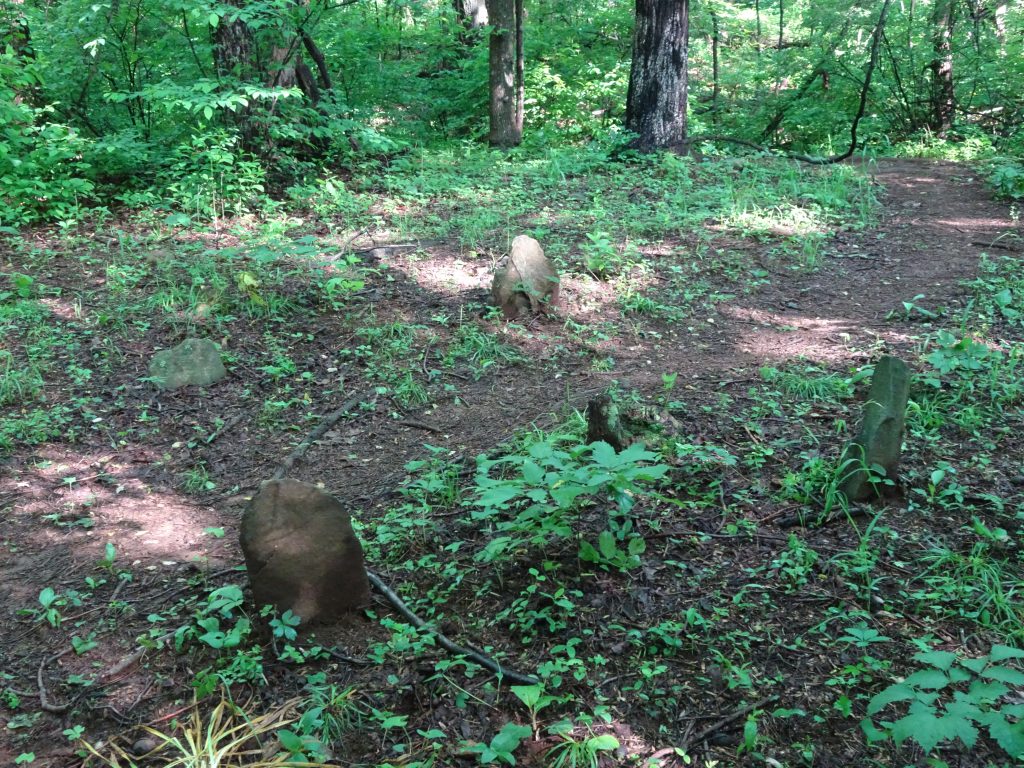
Lowe Family Cemetery
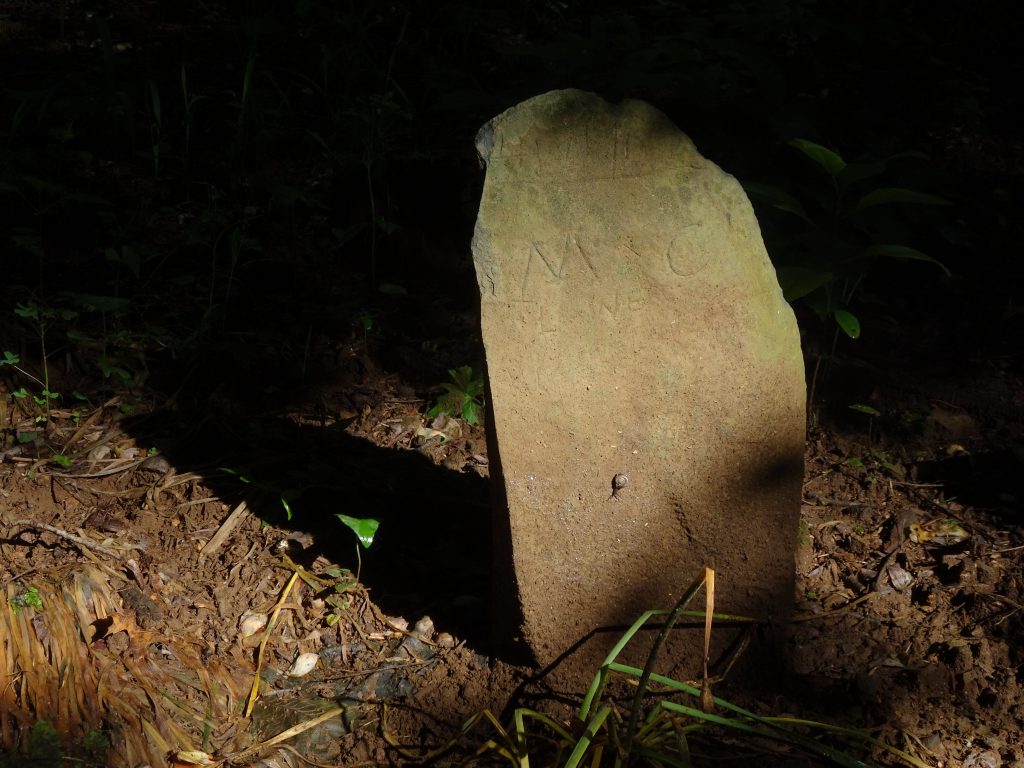
Marker with Inscription
Some flora and fauna on the trail…
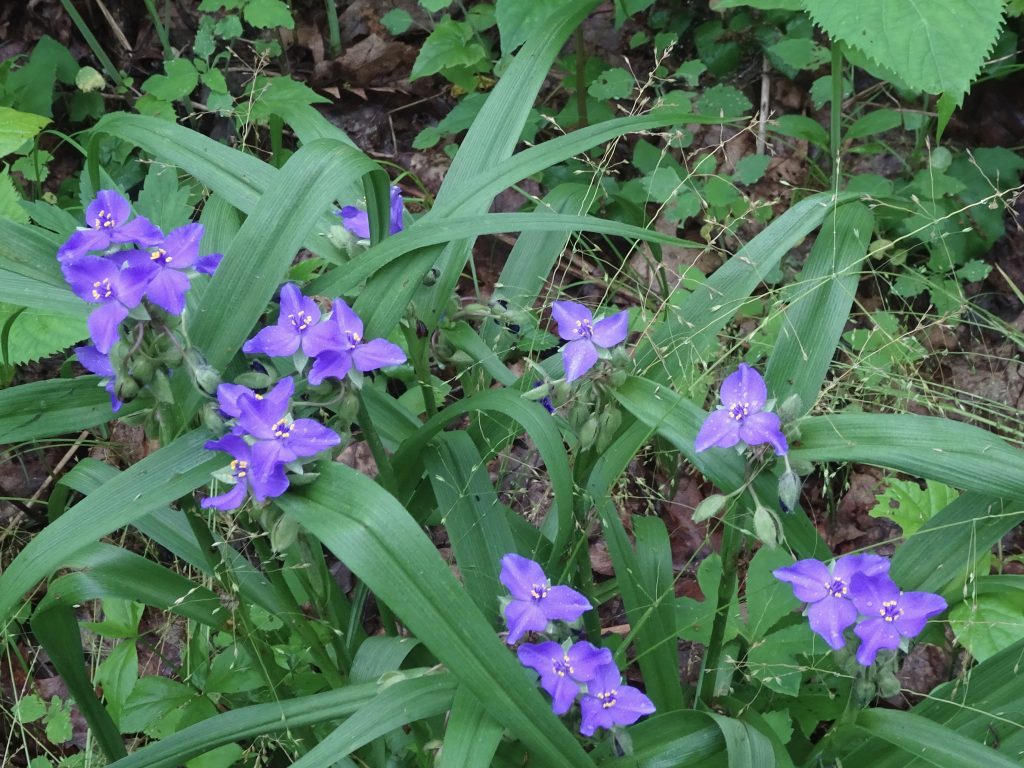
Spiderwort
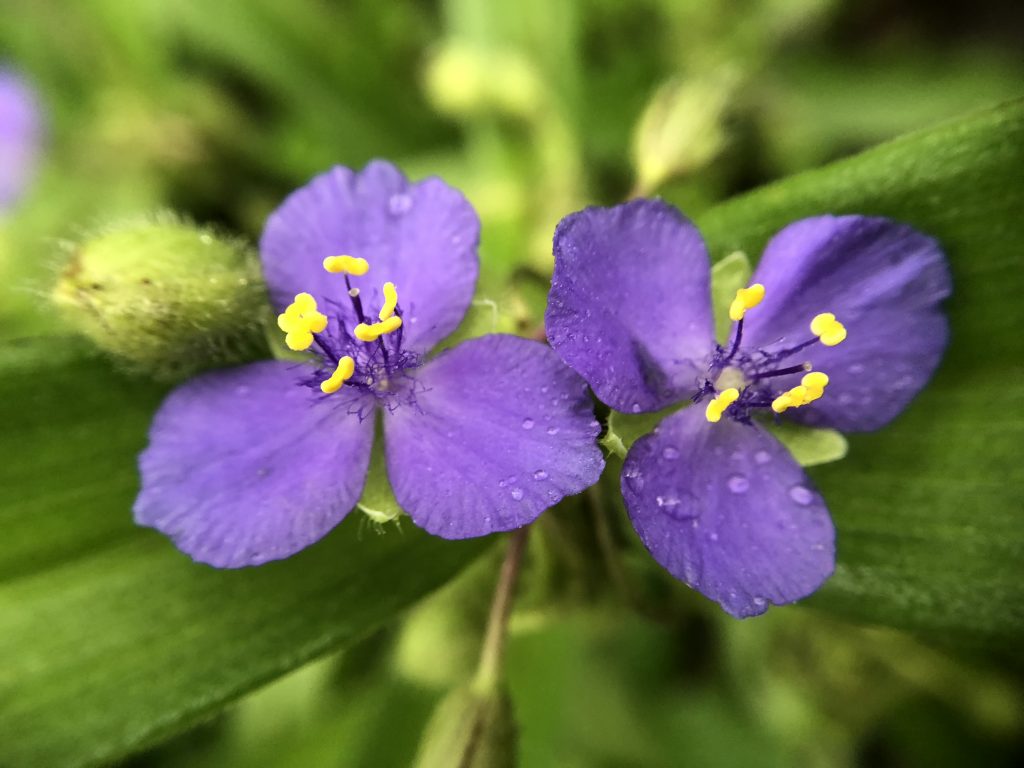
Spiderwort – Up Close
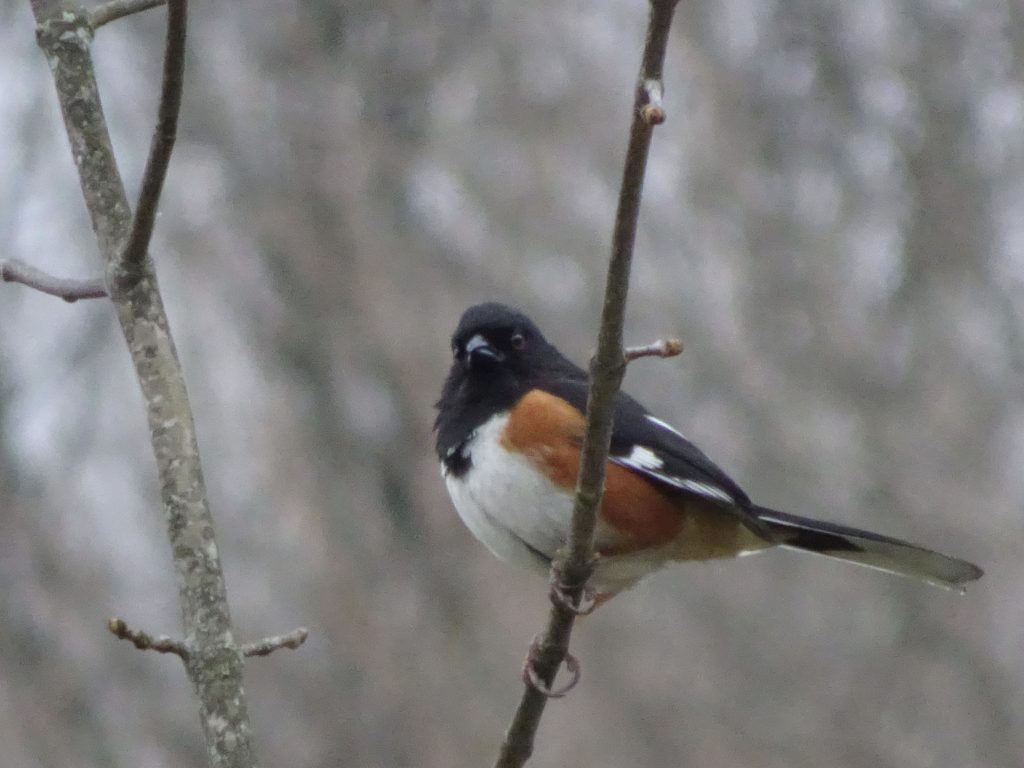
Eastern Towhee
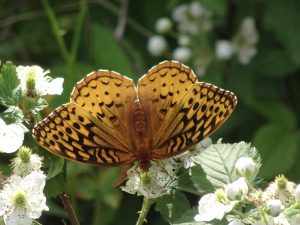
Great Spangled Fritillary

Great Spangled Fritillary
If you’d like to receive an email when a new post is up on the blog, click the email icon on the bottom of the page to subscribe. Thanks for following!
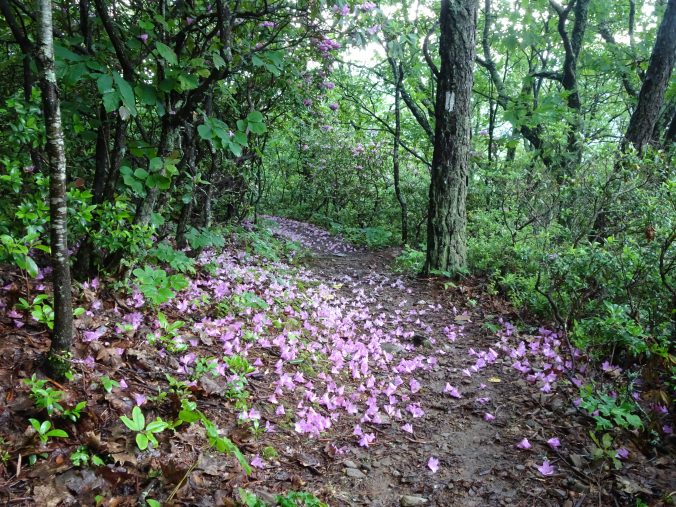
Good Luck, have fun!!
154 pounds sounds pretty lean. Reminds me of wrestling weight classes back in high school.
I’m always interested in old cemeteries. They tell a story. The one headstone with engraving wasn’t really legible in the photo. Could you read anything on it?
I found a write up on the story behind the marker for Ottie Cline Powell. Heartbreaking loss.
Sounds like you are having a great experience.
The middle of the stone has the letters “MC” – don’t know the significance. There is more lettering but partially worn off. I will text you the high res version so you can have a look. I have never seen anything like that cemetery. I suspect they were dirt poor and could not afford engraved stones.